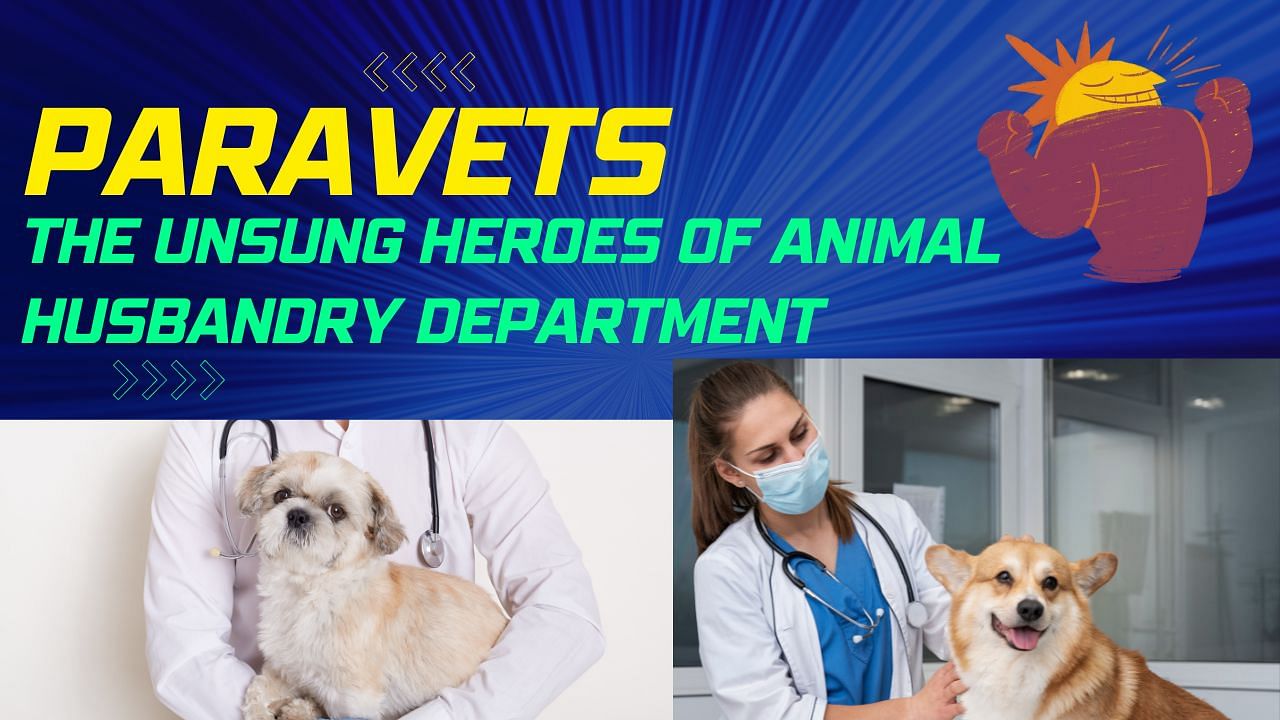
The 20th livestock census reveals a significant livestock population of 536.76 million in India during the period of 2019-20.
Notably, the count of milch animals including cows and buffaloes has reached 125.34 million, indicating a growth of 6 percent compared to the previous census. Despite the rise in domestic animal numbers, India continues to struggle with a range of challenges concerning veterinary services.
These challenges encompass issues of availability, accessibility, acceptability, adequacy, and affordability. While the livestock population has surged by 4.8 percent since 2012, the count of Paravet professionals has remained stagnant at 2012 levels, with minimal to no increase observed, particularly in the union territory of Jammu and Kashmir.
Who Are Paravets?
In Jammu and Kashmir, Para veterinary officials constitute a vital group of animal health experts engaged in livestock services encompassing health, breeding, and minor veterinary tasks under the Veterinary Council Act 1984. Equipped with formal degrees, they receive a year of veterinary pharmacist training. In nations with limited veterinarians like India, they bear significant responsibilities due to the scarcity of professionals, managing additional duties alongside their own.
What is the Role of Paravets?
Para-professionals, known as Paravets, Pashu Mitras, Gopal Mitras, Pranimitra, Pranibandhu, Pranisebee, and more in various states of India, fulfill diverse roles in animal healthcare. They deliver primary veterinary aid, administering vaccinations against sporadic and contagious diseases like Foot and Mouth Disease, Hemorrhagicseoticemia, black quarter, lumpy skin disease, and rabies.
Additionally, they handle tasks like castration, artificial insemination, wound dressing, casting, surgical assistance, and prescribed preliminary treatments. Paravets actively engage in spreading awareness through Gram Sabha meetings, educating about disease prevention, and emphasizing vaccination schedules. They contribute to the Bharat Pashudhan app, uploading data on animal health-related activities, maintaining records, and bridging communication between authorities and the public.
Qualified paravets combat quackery, mitigating the misuse of antibiotics and anti-helminthics, thereby curbing drug resistance. They hold a pivotal role in areas with limited veterinary access, providing deworming facilities against parasitic diseases, and breaking cycles like Hydatidosis/Echinococcosis that threaten both animals and humans.
Paravets offer services such as bull castration, reducing the transmission of diseases like trichomoniasis, brucellosis, and tuberculosis. This enables resource-constrained farmers to utilize free exotic and progeny-tested semen for breeding purposes, fostering self-reliance.
As the frontline defence against livestock diseases, Paravets operate tirelessly in remote regions, ensuring easy access to primary healthcare services while confronting zoonotic risks and numerous challenges inherent to their role.
What Issues Are Faced by Paravets?
Despite their significant contributions and heavy workloads, Paravets in the animal husbandry sector receive inadequate recognition and low salaries. They perform diverse tasks while facing zoonotic disease risks like Brucellosis and Rabies, often contracting such illnesses. Shortages of essential equipment and protective gear further challenge their duties. Urgent attention is needed from the Department of Animal Husbandry Jammu and Kashmir to address these issues promptly.
What’s their Need?
Acknowledging the pivotal role of Paravets is crucial. They must be equipped with appropriate gear to safeguard against infections, along with risk allowances to provide a safety net in case of contracting contagious diseases. Ensuring their salaries are equivalent with their responsibilities is equally important.
Paravets essentially function as the vanguards of animal health. Therefore, it is imperative for the department to furnish them with timely and comprehensive training, keeping them abreast of the latest advancements in animal husbandry and contemporary practices. Given the nature of their duties, the promotion of paravets should be expedited based on merit, fostering opportunities for proficient personnel to advance in their ranks.
Following the example set by other departments within the UT of J&K government, where employees are promoted every two or three years, the animal husbandry department should also adopt this approach instead of the existing practice of promoting staff every 5 to 10 years. Such a shift would ensure fairness and uniformity in promotion avenues across all departments, eradicating any existing disparities.
Hence, in order to cultivate accountability and transparency, the government should establish a system that oversees promotions, job allocations, and the assignment of responsibilities within the animal husbandry department. This process should be viewed through an inclusive lens, prioritizing fairness over mere administrative convenience.











